Related Research Articles
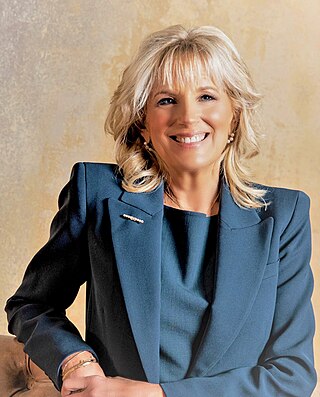
First Lady of the United States (FLOTUS) is the title held by the hostess of the White House, usually the wife of the president of the United States, concurrent with the president's term in office. Although the first lady's role has never been codified or officially defined, she figures prominently in the political and social life of the United States. Since the early 20th century, the first lady has been assisted by official staff, now known as the Office of the First Lady and headquartered in the East Wing of the White House.

The "Ladies of Llangollen", Eleanor Butler (1739–1829) and Sarah Ponsonby (1755–1831), were two upper-class Irish women who lived together as a couple. Their relationship scandalised and fascinated their contemporaries. The pair moved to a Gothic house in Llangollen, North Wales, in 1780 after leaving Ireland to escape the social pressures of conventional marriages. Over the years, numerous distinguished visitors called upon them. Guests included Shelley, Wellington and Wordsworth, the latter of whom wrote a sonnet about them.

First lady or first gentleman is an unofficial title usually used for the wife, and occasionally used for the daughter or other female relative, of a non-monarchical head of state or chief executive. The term is also used to describe a woman seen to be at the top of her profession or art.
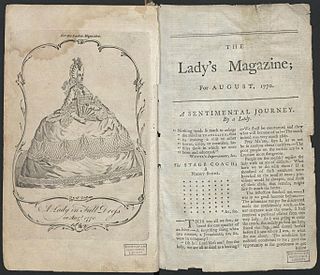
The Lady's Magazine; or Entertaining Companion for the Fair Sex, Appropriated Solely to Their Use and Amusement, was an early British women's magazine published monthly from 1770 until 1847. Priced at sixpence per copy, it began publication in August 1770 by the London bookseller John Coote and the publisher John Wheble. It featured articles on fiction, poetry, fashion, music, and social gossip and was, according to the Victoria and Albert Museum, "the first woman's magazine to enjoy lasting success."
The word lady is a term for a girl or woman, with various connotations. Once used to describe only women of a high social class or status, the equivalent of lord, now it may refer to any adult woman, as gentleman can be used for men. Informal use is sometimes euphemistic or, in American slang, condescending in direct address.
Second lady and second gentleman are honorary titles often used in reference to the spouse of a vice president, or spouse of a lieutenant governor or other second-ranked government official. The title is styled after first lady or first gentleman, which are used to describe the spouse of a president or governor. In discussing both spouses, they may be referred to as the second couple, and if they have children, they are known collectively as the second family.

In geometry, Napoleon's theorem states that if equilateral triangles are constructed on the sides of any triangle, either all outward or all inward, the lines connecting the centres of those equilateral triangles themselves form an equilateral triangle.
Gentleman's Diary or The Mathematical Repository was an almanac published at the end of the 18th century in England, including mathematical problems.

Thomas Penyngton Kirkman FRS was a British mathematician and ordained minister of the Church of England. Despite being primarily a churchman, he maintained an active interest in research-level mathematics, and was listed by Alexander Macfarlane as one of ten leading 19th-century British mathematicians. In the 1840s, he obtained an existence theorem for Steiner triple systems that founded the field of combinatorial design theory, while the related Kirkman's schoolgirl problem is named after him.
William Rutherford (1798–1871) was an English mathematician famous for his calculation of 208 digits of the mathematical constant π in 1841.
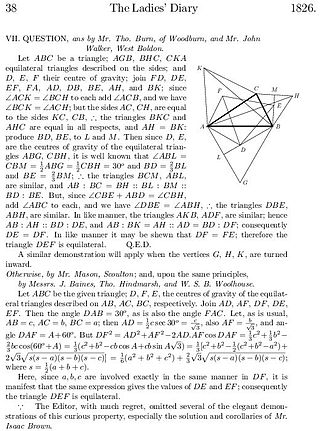
The Ladies' Diary: or, Woman's Almanack appeared annually in London from 1704 to 1841 after which it was succeeded by The Lady's and Gentleman's Diary. It featured material relating to calendars etc. including sunrise and sunset times and phases of the moon, as well as important dates, and a chronology of remarkable events.

John Gough Nichols (1806–1873) was an English painter and antiquary, the third generation in a family publishing business with strong connection to learned antiquarianism.
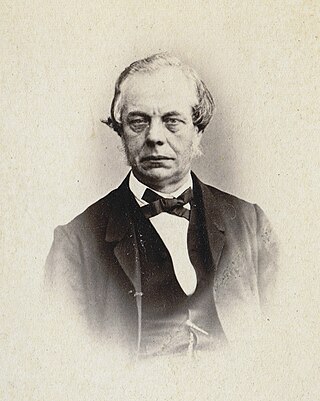
Wesley Stoker Barker Woolhouse was an English actuary with diverse interests in music theory, the design of steam locomotives, measurements, and many other fields, publishing books in all these fields.
John Tipper (1663–1713) was an English mathematician and almanac-maker, now known as the founder of The Ladies' Diary, in which some important mathematical results were first published.

The second gentleman or second lady of the United States is the informal title held by the spouse of the vice president of the United States, concurrent with the vice president's term of office. Coined in contrast to "first lady" – albeit used less commonly – the title "second lady" was apparently first used by Jennie Tuttle Hobart to refer to herself. Second gentleman of the United States is the title held by Doug Emhoff, the husband of Vice President Kamala Harris.
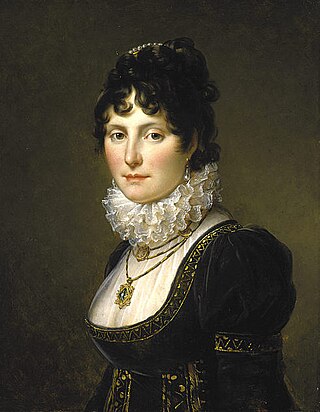
Mary Hamilton Bruce, Countess of Elgin was the first wife of British diplomat Thomas Bruce, 7th Earl of Elgin during his term as Ambassador Extraordinaire to the Ottoman Empire and one of the most influential and wealthiest heiresses of the late 18th and early 19th century.
Robert Heath was an English army officer, mathematician, and periodical editor.
Lady Lucy Anne FitzGerald was an Anglo-Irish political radical: a supporter, with her mother Lady Emily, of her cousin, the English Whig reformer Charles James Fox and, with her brother Lord Edward, of the republican and democratic Society of United Irishmen.
References
- 1 2 Iona Italia (2005). The Rise of Literary Journalism in the Eighteenth Century: Anxious Employment. Psychology Press. p. 5. ISBN 978-0-415-34392-3 . Retrieved 22 October 2016.